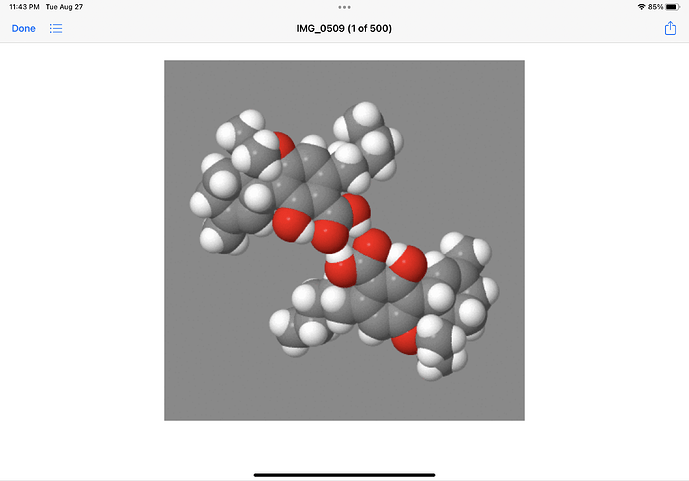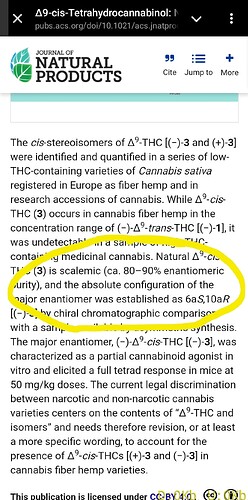Holla peeps! It’s Chris beaver here. As a very old manufacturer, I am bored. We have been doing the same shit for years and years. I haven’t seen anything new or any real innovative tech come out.
Is there anyone doing anything cool?
Or anyone want to blaze up and chat about the industry?

Skipping distillation and just going toward fast THCA capture seems to be a new trend
Nice! It’s about time. Been doing that for about 6 years. It’s waaayyy better.
peeing your pants? I mean, if you say so
I think yes, but it’s on a longer time scale and in more specialized ways.
Something to note is that there was not a lot of information widely available before this forum. There were black market operators and some rec operations but hell, there were open blasting operations. Diamonds weren’t even really a thing.
There was a lot of low hanging fruit that could be turned into easy technologies; closed loop systems, crc, sub micron filtration, recrystallization, temperature tuning…all standard now but took a while to get here. Same thing with ethanol, month long soaks with wine presses. Now we spray cold in bag or decanter centrifuges. These are things that are easy enough to do most people can do.
The things that took longer are good crystallization parameters, terpene refinement, distillation parameters, fast acting formulations, direct steam distillation…less common but more skilled operators can figure out or more profitable operations can purchase.
Now we are at the point where it is very expensive to develop or implement new technologies because of the skill set required or complexity…high efficiency countercurrent heat exchange, skipping distillation, better botanical terpene blends, tunable crystal sizes +/-0.05g. Unless you’re a big company, you pay for patented technology. (How you categorize may vary).
This is all ignoring the fact that quality for even low level operators has more or less reached its peak in the customers eyes; 90+% THC, perfect terpene preservation, solvent free, good taste, good color (biggest variable). Many of us are purists, but only 1-5% of your customer base are top shelf clients, the rest are bottom shelf or are $20 bottle of wine people. This isn’t like semiconductors where people will pay you a lot more for getting from ppb to ppt impurity (or you’re greatly rewarded for doing it at scale). There aren’t really any new products types to make.
So there isn’t much new because there isn’t really anything new to do. Maybe some blue diamonds exist, polymorphic crystals could lead to cool products, sauce clarification, but there’s not much. You only invent THC diamonds once.
Now the only thing left is to make things cheaper and more reliable. This can be cool too, just from a different perspective. A few of my favorites as an operator are the following:
Propane wfe for high solvent recovery plus active allowing for low loss of propane (greenhouse gas, lower opex and MAQ).
Terpene clarification membranes (specifically dead end ones for smaller batches and losses), color is very important to customers, we dont even sell it past a certain shade. Not needing to use crc or terpene distillation is huge.
Dirty diamond tek was a massive game changer for me.
Stainless steel distillation heads because fuck glass.
Also, automation. With more stability in the industry and desired products, your investment won’t go to waste.
That’s what I see; I also agree with the unspoken sentiment that it does feel less exciting since there aren’t these big innovations going on in the industry anymore. There aren’t any big engineering challenges that need to be solved so now it’s going to be elegant and creative solutions. Breakthroughs will come as cannabis research emerges, but not a ton otherwise. I see this as a positive too though; this rewards the people here doing the work and have their hands on the machinery, and if you look under the right rocks, you might see some cool stuff.
Hmmm still think there is a ton of innovation possible
Using water as extraction solvent
Using salting as purification method
Making cannabinoid free HTE butane or propane extracts
Figuring out a way to seperate R thc from S thc
Making stable polyploids
Isomerize to near purity sop s
Preferably by means of polymeric beads
Finding a cure for plagues and virus infections of crops
I am in my early 50 s and hope to see the above mentioned solved
I’ve spent seven years trying to make things in this industry faster, cheaper, more efficient, and to require fewer humans. In my mind there is as much room for innovation in this field as there always was. Possibly more - we now know a lot more things are possible than we believed back in the early days.
The game has always been:
How much less money can you throw in the trash?
How many watts and joules can you save?
How many seconds?
Here’s some opportunities that might count as “innovation”
Stop adding and removing heat.
Ditch the heavy rotating equipment - stop using fuges as extraction vessels.
Don’t try to get humans to do things they’re bad at - and if you’ve met humans, you’ll know that that’s most things.
As to only use the fuge to seperate the biomass from the solvent
But have the extraction itself be preformed in a large volume mixing vessel ?
Been playing with this and it s amazing how much of this solvent biomass soup can be transferred with vacuum ![]()
I think there’s quite a bit of innovation left to be discovered / published. Seems to me that membranes have great potential in recuperating solvents, refining the product as well as some chiral separation abilities. I think that one of the most important things to be discovered / published is chiral “manipulation”. I believe there are great discoveries to be made with therapines and associated compounds, I know there is at least one guy that’s diving deep into this for some years now while expending great resources and I can’t wait to see what he comes up with overtime. I think genetic “manipulation” will surely have an impact sometime in the future. There are people doing research but I will concede that I have seen some of the wind slowly gets sucked out of the sailes of research and innovation in this field over the past couple of years.
Static tech dry sift is still in its’ infancy. Sambo Creek is the only company I’ve heard of who is attempting to scale it.
Build a machine that can fully automate it… stick a vision system to it that analyzes the feed from a magnified camera looking at the sift. Use that to dial in the settings for your specific crop.
I prefer no fuges during extraction at all.
I suppose if your solvent is expensive, getting every last ml off of the biomass is an important cost saving measure.
Back when we used traditional solvents I had the system automagically adjust the drying time in the fuge based on load size, energy cost, solvent cost, production rates, and output product value.
These days, the only fuge in our system acts as an isolate catcher.
We have always tried to move everything as liquid slurries. Nitrogen push or vacuum on the receiver or a balance of both. Some systems work better - less clogging -with one or the other, even though theoretically positive pressure on the upstream and negative pressure on the downstream are the same thing.
Weed into vessel → close lid → gets sucked into fuge at the correct time is a lot nicer to deal with than unevenly loaded bags by uncaring operators. Once you get the appropriate parameters figured out of course.
CBGv dominant genetics should be doable (or at least some sorta 1:1 CBG:CBGv)? Anything wilder in the realm of possibilities?
Missed you dude, glad to see ya still kicking
Can you guys clarify a bit what you’re talking about?
It s obvious that in psychoacrive substances the chirality matters
Whether it s mdma ketamine crystel meth hhc thc-p with all these substances one of the chiral states has a better experience than the other
Vaguely this is also described for thc D9
In the papers and I am pretty confident that once able to seperate the two to singel chiral compounds the psychoacrive effect of each will be different (noticeable) and thus give more options to the end user
I think THC diamonds was not commonly known as a product and it was jarring for a lot of people if your used to shatter slabs.
@Roguelab, I agree there are big breakthroughs but they don’t appear that way (especially if you’re not in the weeds). Getting from 95% 99% enantiomeric excess is a much greater achievement than 50% to 90%, the latter just feels bigger.
Plant based d9THCA and its D9 decarb product is a optically pure enantiomer a result of biosynthesis by enzymatic action.That is: 6aR ,10aR )-delta-9-Tetrahydrocannabinol; (−)-trans -Δ9-Tetrahydrocannabinol; THC
Most often referred to as the (−)-trans -Δ9-Tetrahydrocannabinol; THC .
My point is that it is pure enantiomer by bio-synthesis.
However if you chemically synthesize it by acid catalysis of CBD…I think you get various mixtures of the enantiomer.
One of which may well be less active a a partial agonist of the CB1R or even a “partial antagonist” competing for the binding site.
The separation of the enantiomers has been studied a bit by Waters Corp.
(https://www.waters.com/content/dam/waters/en/app-notes/2016/720005812/720005812-en.pdf
They even show an overnight CBD conversion process that only produced (−)-trans -Δ9-Tetrahydrocannabinol enantiomer (plus a whole load of unwanted).
There is a patent on production of the (+,-) racemic mixture of trans -Δ9-Tetrahydrocannabinol. In that patent the author shows that racemic THC crystallizes where as we all know that (−)-trans -Δ9-Tetrahydrocannabinol does not crystallize.
Now this is why I asked @Neutral what he meant by “THC diamonds” as crystalline forms of THC are known to exist of racemic mixtures and the process has a patent. Or was he off hand referring to THCA diamonds but just wrote “THC diamonds”?
I like to further point out that THCA diamonds were not invented…they just happened to fall out of solution from bho extracts of fresh material. There was no original intention or design. However, tremendous progress in the enhancement and production scale of this type of crystallization. “Evolve” video on strategic advantage of extraction lab focus on Cannabinoic Acid process” is well worth watching. To date, no one has produced a X-ray diffraction pattern/analysis of alkane crystallized “diamond”.
Raman data back ten years or more have shown at least two distinct types of crystalline THCA.
@TheVanillaGorilla ……I don’t really understand your implications of design research by your friend concerning enantiomers. The CB1R is so complicated with radar plot interpretations and two or three non conventional pathways of activation depending on abuse level…where do you even start?
@Roguelab , I’ll look that patent up and get a reference to you.
This is all we got!
I have seen published research that disputes that claim. The research I’ve seen says that it’s between 80 and 90% R.
It is possible to Force a reaction toward the specific optical outcome. It is possible to optically resolve/separate/isolate to a reasonably high optical purity. It’s not a question whether we can do it it’s a question whether we can do it and keep it commercially viable. We do know that each optical enantiomer has different effect on us. We don’t know or at least it is not published what percentages of different optical mixtures give the best desired effect. Furthermore I am of the opinion that severe prolonged use/abuse will “damage” The receptors in the brain associated with the specific enantiomer that is being “abused” and thus different people can have significantly different experience with different enantiomer and so “tailoring” the enantiomeric profile of the product to different customers is a definite possibility in the future. This can have far reaching implications far beyond what I have just pointed out.
I’ve never specified that I have a friend that is researching this. I specifically said that -

